Fiona Ingram's Blog, page 54
March 12, 2012
More Writing Tips From Downton Abbey
I confess I am a Downton Abbey junkie. I love the series and I've watched Seasons 1 and 2 several times already on DVD. I can't wait for Seasons 3 and 4 and 5... I never really thought about why the characters captivated me so much until I read an article by Randy Ingermanson that hits the nail right on the head. And that nail is something every writer should seek to achieve. By giving your characters a goal, a desire, or a burning ambition, something they will strive to achieve, through thick and thin, come hell or high water, you'll create the type of conflict and depth of character that will keep your readers glued to the page (or in this case, the screen!). Randy says it so much better so here is his article. NB: this article may contain spoilers for people who have been living in a cave and have not yet heard of Downton Abbey!
Why Downton Abbey Rocks
Downton Abbey is the outrageously popular TV series set in the home of an aristocratic British family during the years 1912 through 1920. On the face of it, the show's popularity makes no sense. 1912? What was happening in 1912? Oh yeah, the Titanic, but what else? Why is Downton Abbey getting such incredible reviews? Why has it won six Emmy Awards and a Golden Globe? Why has it become the best-selling DVD box set on Amazon?
I n a word, it's story. Downton Abbey is packed full of story. And what does "story" mean, precisely? Story is characters in conflict. Characters with impossible dreams. Characters willing to do anything to reach their dreams. Let's look at the characters of Downton Abbey and their impossible dreams.
 Edith, Mary and Sybil.Lady Mary Crawley is young and beautiful, the eldest daughter of the Earl of Grantham. As the story begins, her fiancé has just died on the Titanic. Mary's problem is that she doesn't have a problem with that. She didn't much love the guy, even though she was engaged to him. Why would any girl agree to marry a guy she didn't love? Simple. She was pushed into it. Mary is the oldest of three daughters, but there aren't any sons in the Crawley family. Unfortunately, the estate and the title and most of the family money have been "entailed," meaning that they will be inherited by the nearest male relative, not by Mary.
Edith, Mary and Sybil.Lady Mary Crawley is young and beautiful, the eldest daughter of the Earl of Grantham. As the story begins, her fiancé has just died on the Titanic. Mary's problem is that she doesn't have a problem with that. She didn't much love the guy, even though she was engaged to him. Why would any girl agree to marry a guy she didn't love? Simple. She was pushed into it. Mary is the oldest of three daughters, but there aren't any sons in the Crawley family. Unfortunately, the estate and the title and most of the family money have been "entailed," meaning that they will be inherited by the nearest male relative, not by Mary.
This is massively unfair, but the family has hoped to make it less unfair by pushing Mary into marrying the heir. Mary has gone along with this, until now. Not happily, but she's gone along. Now the heir is dead and Mary doesn't feel sad about him. The only thing she feels sad about is that she doesn't feel sad. Something is deeply wrong with Mary. She knows what it is. She has no purpose in life. As the story begins, her main purpose is to find her purpose. Mary wants to make her own decisions in life. And that's impossible. Women in her position don't make decisions. They have their decisions made for them. With the loss of her unwanted fiancé, something snaps in Mary. From now on, she isn't going to have decisions foisted upon her. She's going to make her own decisions. If the only decisions Mary has power to make are bad ones, then by heavens, she'll make horrible, wretched, idiotic decisions. But she will choose her own way in life. She will. Starting now.
The news of the Titanic arrives on the same day that the new valet, John Bates, arrives to begin his duties. Bates is an old Army friend of Lord Grantham, and lately some shrapnel has shifted in his knee, giving him a serious limp. But nobody knows about his injury until he arrives to begin work. Unfortunately, Downton Abbey has zillions of stairs and no elevators. How can Bates manage his duties when he can't carry things even on level ground? Will Lord Grantham have to get rid of his new valet? Bates is one of the show's most likable characters. He never complains. Never feels sorry for himself. Never tells anyone about the failings of the other servants. He's honest and kind and decent. All he wants is to have a job, and that is apparently the one thing he's going to be denied.
Bates has a rival. The head footman, Thomas, is young, strong, and handsome, and he wants the job of valet. Thomas has a massive chip on his shoulder because he's "different" -- which is his term for the fact that he's gay. In 1912, that's a serious problem. Thomas will do whatever it takes to get the job of valet, and if he has to lie and cheat to get Bates removed, no problem. But whether he gets the job or not, Thomas will never be happy. Because he's "different."
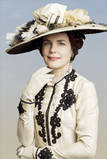 Lady Cora Mary's mother is Cora, originally from an American family, now a middle-aged English aristocrat. Cora desperately wants to get her three daughters married off well to nice men. Now that the heir is dead, it's time to reopen the question of that wretched entail. Why can't it be broken? Cora repeatedly asks her husband to get the family lawyer to break the entail. And he repeatedly refuses, claiming that it can't be done. Cora strikes up an alliance with her mother-in-law, Violet, who also thinks that the best course is to break the entail.
Lady Cora Mary's mother is Cora, originally from an American family, now a middle-aged English aristocrat. Cora desperately wants to get her three daughters married off well to nice men. Now that the heir is dead, it's time to reopen the question of that wretched entail. Why can't it be broken? Cora repeatedly asks her husband to get the family lawyer to break the entail. And he repeatedly refuses, claiming that it can't be done. Cora strikes up an alliance with her mother-in-law, Violet, who also thinks that the best course is to break the entail.
Violet is an acid-tongued old woman who gets most of the funniest lines of dialogue in the series. Violet wants the same thing Cora wants—to get the daughters married off, and most especially to see Mary keep the family fortune. But neither Violet nor Cora can persuade Lord Grantham to try to break the entail. Why won't Lord Grantham at least try? He certainly loves his daughter Mary, and wants to see her married well and prosperous. But breaking the entail would probably not succeed, he's convinced. Mary might get the money, but never the estate. Lord Grantham has poured his entire life into maintaining the estate. He married Cora for her money because it would enable him to keep the estate. Now how can he separate the estate from the money? The estate would die, and he can't tolerate that.
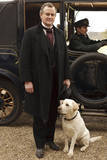 Lord Grantham For Lord Grantham, the solution is simple. Let Mary marry the new heir. That would be young Matthew Crawley, a third cousin once removed. He's a handsome guy, although (gack) he's a lawyer. But even lawyers can often be trained. Lord Grantham's plan is to train young Matthew to be the new Earl. And to convince Mary to marry him. Why won't Mary do what she's told? It's the obviously right thing. Lord Grantham loves Mary, but she can be so infuriating sometimes. Matthew's certainly a nice guy, handsome, kind, honest. If Mary didn't feel forced to marry him, she'd probably be interested. But Mary's a stubborn cuss, and she won't be pushed. So Matthew has no chance, even before she meets him. Matthew has no chance, even though he falls in love with her on sight. Matthew would do anything to convince her to marry him. But nothing is enough. He can't have her, plain and simple.
Lord Grantham For Lord Grantham, the solution is simple. Let Mary marry the new heir. That would be young Matthew Crawley, a third cousin once removed. He's a handsome guy, although (gack) he's a lawyer. But even lawyers can often be trained. Lord Grantham's plan is to train young Matthew to be the new Earl. And to convince Mary to marry him. Why won't Mary do what she's told? It's the obviously right thing. Lord Grantham loves Mary, but she can be so infuriating sometimes. Matthew's certainly a nice guy, handsome, kind, honest. If Mary didn't feel forced to marry him, she'd probably be interested. But Mary's a stubborn cuss, and she won't be pushed. So Matthew has no chance, even before she meets him. Matthew has no chance, even though he falls in love with her on sight. Matthew would do anything to convince her to marry him. But nothing is enough. He can't have her, plain and simple.
There's enough so far to make a movie, but not a TV series. There has to be more, much more. And there is. Practically every other character has something they desperately want—and can't have. Edith, the homely second daughter of Lord and Lady Grantham, would love to have a husband. But every time she sets her cap for a man, her beautiful older sister Mary steps in and flirts with him. Edith has no chance for a man and she hates Mary. She'd do anything to ruin Mary's life. Anything.
Sybil, the youngest daughter, is interested in politics and women's rights. But what chance does she have to do anything that matters? She's been educated by a governess, which means she's learned nothing. She can't do anything, because it's not ALLOWED, and that drives her crazy.
Anna, the head housemaid, is a thirty-something woman, not quite pretty, not quite plain. She's sweet and kind and she's naturally attracted to the new valet, Mr. Bates. But Bates has some dark secrets in his past, things he can't talk about. Anna knows instinctively that Bates is protecting somebody. But Mr. Bates won't talk about it, and until he does, Anna's love is going unrequited.
Cora's maid, Sarah O'Brien, is a bitter woman who secretly despises her employers but adopts a fawning attitude when they're around. She's in league with Thomas to make life miserable for Mr. Bates, and incidentally Anna. For no good reason. It's not clear what drives O'Brien, but her goal is clear -- to make everyone else miserable. She's extremely good at that.
The housekeeper, Mrs. Hughes, is a quiet soul, but she secretly wonders what her life would have been like if she'd married the farmer who asked her many years ago. But she'll never know, will she? Unless. she gets a second chance at love. Will she get that chance? Would she take it?
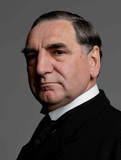 Mr. CarsonThe butler, Mr. Carson, runs the household and supervises all the other servants. It's a constant challenge. Mr. Bates can't carry. Thomas is a conniving SOB, but you can't pin anything on him. O'Brien is cruel and arrogant to the servants, but she's always sweetness and light around her employers, so there's no getting rid of her. Mr. Carson feels that the honour of Downton Abbey rests on his shoulders. It's a heavy responsibility. Carson desperately wants to maintain tradition, but that's impossible. The world is changing and soon it's going to be unrecognizable. Butlers should have no favorites, but Carson loves Mary like his own daughter and he'd do anything to see her happily married. Mr. Carson has a secret from his past, and it would kill him if anyone knew. But the only person who knows his secret lives far away. For the moment.
Mr. CarsonThe butler, Mr. Carson, runs the household and supervises all the other servants. It's a constant challenge. Mr. Bates can't carry. Thomas is a conniving SOB, but you can't pin anything on him. O'Brien is cruel and arrogant to the servants, but she's always sweetness and light around her employers, so there's no getting rid of her. Mr. Carson feels that the honour of Downton Abbey rests on his shoulders. It's a heavy responsibility. Carson desperately wants to maintain tradition, but that's impossible. The world is changing and soon it's going to be unrecognizable. Butlers should have no favorites, but Carson loves Mary like his own daughter and he'd do anything to see her happily married. Mr. Carson has a secret from his past, and it would kill him if anyone knew. But the only person who knows his secret lives far away. For the moment.
There's more, of course. I've left out a few major characters and all the minor characters. But I've covered enough to make it clear what drives Downton Abbey. Here is the secret that will drive your own fiction to success, if you let it: Every character in Downton Abbey behaves as if he or she were the hero of the story. Each one desperately wants something. Something he can't have. Something she will do almost anything to get. When you write your novel, it's tempting to bring in characters solely to serve the story of your protagonist. Characters who are there merely to play the role of Sidekick or Villain or Love Interest or Humorous Relief or whatever. Characters without their own hopes and dreams. That is the road to second-rate fiction.
Give each character a dream. Preferably an impossible dream. Something your character will do anything to get. When a person will do anything to get what they want, then anything can happen. That's why Downton Abbey rocks. That's what will make your story rock too.
This article is reprinted by permission of the author. Award-winning novelist Randy Ingermanson, "the Snowflake Guy," publishes the free monthly Advanced Fiction Writing E-zine, with more than 30,000 readers. If you want to learn the craft and marketing of fiction, AND make your writing more valuable to editors, AND have FUN doing it, visit http://www.advancedfictionwriting.com/ Download your free Special Report on Tiger Marketing and get a free 5-Day Course in How To Publish a Novel.
Why Downton Abbey Rocks
Downton Abbey is the outrageously popular TV series set in the home of an aristocratic British family during the years 1912 through 1920. On the face of it, the show's popularity makes no sense. 1912? What was happening in 1912? Oh yeah, the Titanic, but what else? Why is Downton Abbey getting such incredible reviews? Why has it won six Emmy Awards and a Golden Globe? Why has it become the best-selling DVD box set on Amazon?
I n a word, it's story. Downton Abbey is packed full of story. And what does "story" mean, precisely? Story is characters in conflict. Characters with impossible dreams. Characters willing to do anything to reach their dreams. Let's look at the characters of Downton Abbey and their impossible dreams.
 Edith, Mary and Sybil.Lady Mary Crawley is young and beautiful, the eldest daughter of the Earl of Grantham. As the story begins, her fiancé has just died on the Titanic. Mary's problem is that she doesn't have a problem with that. She didn't much love the guy, even though she was engaged to him. Why would any girl agree to marry a guy she didn't love? Simple. She was pushed into it. Mary is the oldest of three daughters, but there aren't any sons in the Crawley family. Unfortunately, the estate and the title and most of the family money have been "entailed," meaning that they will be inherited by the nearest male relative, not by Mary.
Edith, Mary and Sybil.Lady Mary Crawley is young and beautiful, the eldest daughter of the Earl of Grantham. As the story begins, her fiancé has just died on the Titanic. Mary's problem is that she doesn't have a problem with that. She didn't much love the guy, even though she was engaged to him. Why would any girl agree to marry a guy she didn't love? Simple. She was pushed into it. Mary is the oldest of three daughters, but there aren't any sons in the Crawley family. Unfortunately, the estate and the title and most of the family money have been "entailed," meaning that they will be inherited by the nearest male relative, not by Mary.This is massively unfair, but the family has hoped to make it less unfair by pushing Mary into marrying the heir. Mary has gone along with this, until now. Not happily, but she's gone along. Now the heir is dead and Mary doesn't feel sad about him. The only thing she feels sad about is that she doesn't feel sad. Something is deeply wrong with Mary. She knows what it is. She has no purpose in life. As the story begins, her main purpose is to find her purpose. Mary wants to make her own decisions in life. And that's impossible. Women in her position don't make decisions. They have their decisions made for them. With the loss of her unwanted fiancé, something snaps in Mary. From now on, she isn't going to have decisions foisted upon her. She's going to make her own decisions. If the only decisions Mary has power to make are bad ones, then by heavens, she'll make horrible, wretched, idiotic decisions. But she will choose her own way in life. She will. Starting now.
The news of the Titanic arrives on the same day that the new valet, John Bates, arrives to begin his duties. Bates is an old Army friend of Lord Grantham, and lately some shrapnel has shifted in his knee, giving him a serious limp. But nobody knows about his injury until he arrives to begin work. Unfortunately, Downton Abbey has zillions of stairs and no elevators. How can Bates manage his duties when he can't carry things even on level ground? Will Lord Grantham have to get rid of his new valet? Bates is one of the show's most likable characters. He never complains. Never feels sorry for himself. Never tells anyone about the failings of the other servants. He's honest and kind and decent. All he wants is to have a job, and that is apparently the one thing he's going to be denied.
Bates has a rival. The head footman, Thomas, is young, strong, and handsome, and he wants the job of valet. Thomas has a massive chip on his shoulder because he's "different" -- which is his term for the fact that he's gay. In 1912, that's a serious problem. Thomas will do whatever it takes to get the job of valet, and if he has to lie and cheat to get Bates removed, no problem. But whether he gets the job or not, Thomas will never be happy. Because he's "different."
 Lady Cora Mary's mother is Cora, originally from an American family, now a middle-aged English aristocrat. Cora desperately wants to get her three daughters married off well to nice men. Now that the heir is dead, it's time to reopen the question of that wretched entail. Why can't it be broken? Cora repeatedly asks her husband to get the family lawyer to break the entail. And he repeatedly refuses, claiming that it can't be done. Cora strikes up an alliance with her mother-in-law, Violet, who also thinks that the best course is to break the entail.
Lady Cora Mary's mother is Cora, originally from an American family, now a middle-aged English aristocrat. Cora desperately wants to get her three daughters married off well to nice men. Now that the heir is dead, it's time to reopen the question of that wretched entail. Why can't it be broken? Cora repeatedly asks her husband to get the family lawyer to break the entail. And he repeatedly refuses, claiming that it can't be done. Cora strikes up an alliance with her mother-in-law, Violet, who also thinks that the best course is to break the entail.Violet is an acid-tongued old woman who gets most of the funniest lines of dialogue in the series. Violet wants the same thing Cora wants—to get the daughters married off, and most especially to see Mary keep the family fortune. But neither Violet nor Cora can persuade Lord Grantham to try to break the entail. Why won't Lord Grantham at least try? He certainly loves his daughter Mary, and wants to see her married well and prosperous. But breaking the entail would probably not succeed, he's convinced. Mary might get the money, but never the estate. Lord Grantham has poured his entire life into maintaining the estate. He married Cora for her money because it would enable him to keep the estate. Now how can he separate the estate from the money? The estate would die, and he can't tolerate that.
 Lord Grantham For Lord Grantham, the solution is simple. Let Mary marry the new heir. That would be young Matthew Crawley, a third cousin once removed. He's a handsome guy, although (gack) he's a lawyer. But even lawyers can often be trained. Lord Grantham's plan is to train young Matthew to be the new Earl. And to convince Mary to marry him. Why won't Mary do what she's told? It's the obviously right thing. Lord Grantham loves Mary, but she can be so infuriating sometimes. Matthew's certainly a nice guy, handsome, kind, honest. If Mary didn't feel forced to marry him, she'd probably be interested. But Mary's a stubborn cuss, and she won't be pushed. So Matthew has no chance, even before she meets him. Matthew has no chance, even though he falls in love with her on sight. Matthew would do anything to convince her to marry him. But nothing is enough. He can't have her, plain and simple.
Lord Grantham For Lord Grantham, the solution is simple. Let Mary marry the new heir. That would be young Matthew Crawley, a third cousin once removed. He's a handsome guy, although (gack) he's a lawyer. But even lawyers can often be trained. Lord Grantham's plan is to train young Matthew to be the new Earl. And to convince Mary to marry him. Why won't Mary do what she's told? It's the obviously right thing. Lord Grantham loves Mary, but she can be so infuriating sometimes. Matthew's certainly a nice guy, handsome, kind, honest. If Mary didn't feel forced to marry him, she'd probably be interested. But Mary's a stubborn cuss, and she won't be pushed. So Matthew has no chance, even before she meets him. Matthew has no chance, even though he falls in love with her on sight. Matthew would do anything to convince her to marry him. But nothing is enough. He can't have her, plain and simple.There's enough so far to make a movie, but not a TV series. There has to be more, much more. And there is. Practically every other character has something they desperately want—and can't have. Edith, the homely second daughter of Lord and Lady Grantham, would love to have a husband. But every time she sets her cap for a man, her beautiful older sister Mary steps in and flirts with him. Edith has no chance for a man and she hates Mary. She'd do anything to ruin Mary's life. Anything.
Sybil, the youngest daughter, is interested in politics and women's rights. But what chance does she have to do anything that matters? She's been educated by a governess, which means she's learned nothing. She can't do anything, because it's not ALLOWED, and that drives her crazy.
Anna, the head housemaid, is a thirty-something woman, not quite pretty, not quite plain. She's sweet and kind and she's naturally attracted to the new valet, Mr. Bates. But Bates has some dark secrets in his past, things he can't talk about. Anna knows instinctively that Bates is protecting somebody. But Mr. Bates won't talk about it, and until he does, Anna's love is going unrequited.
Cora's maid, Sarah O'Brien, is a bitter woman who secretly despises her employers but adopts a fawning attitude when they're around. She's in league with Thomas to make life miserable for Mr. Bates, and incidentally Anna. For no good reason. It's not clear what drives O'Brien, but her goal is clear -- to make everyone else miserable. She's extremely good at that.
The housekeeper, Mrs. Hughes, is a quiet soul, but she secretly wonders what her life would have been like if she'd married the farmer who asked her many years ago. But she'll never know, will she? Unless. she gets a second chance at love. Will she get that chance? Would she take it?
 Mr. CarsonThe butler, Mr. Carson, runs the household and supervises all the other servants. It's a constant challenge. Mr. Bates can't carry. Thomas is a conniving SOB, but you can't pin anything on him. O'Brien is cruel and arrogant to the servants, but she's always sweetness and light around her employers, so there's no getting rid of her. Mr. Carson feels that the honour of Downton Abbey rests on his shoulders. It's a heavy responsibility. Carson desperately wants to maintain tradition, but that's impossible. The world is changing and soon it's going to be unrecognizable. Butlers should have no favorites, but Carson loves Mary like his own daughter and he'd do anything to see her happily married. Mr. Carson has a secret from his past, and it would kill him if anyone knew. But the only person who knows his secret lives far away. For the moment.
Mr. CarsonThe butler, Mr. Carson, runs the household and supervises all the other servants. It's a constant challenge. Mr. Bates can't carry. Thomas is a conniving SOB, but you can't pin anything on him. O'Brien is cruel and arrogant to the servants, but she's always sweetness and light around her employers, so there's no getting rid of her. Mr. Carson feels that the honour of Downton Abbey rests on his shoulders. It's a heavy responsibility. Carson desperately wants to maintain tradition, but that's impossible. The world is changing and soon it's going to be unrecognizable. Butlers should have no favorites, but Carson loves Mary like his own daughter and he'd do anything to see her happily married. Mr. Carson has a secret from his past, and it would kill him if anyone knew. But the only person who knows his secret lives far away. For the moment.There's more, of course. I've left out a few major characters and all the minor characters. But I've covered enough to make it clear what drives Downton Abbey. Here is the secret that will drive your own fiction to success, if you let it: Every character in Downton Abbey behaves as if he or she were the hero of the story. Each one desperately wants something. Something he can't have. Something she will do almost anything to get. When you write your novel, it's tempting to bring in characters solely to serve the story of your protagonist. Characters who are there merely to play the role of Sidekick or Villain or Love Interest or Humorous Relief or whatever. Characters without their own hopes and dreams. That is the road to second-rate fiction.
Give each character a dream. Preferably an impossible dream. Something your character will do anything to get. When a person will do anything to get what they want, then anything can happen. That's why Downton Abbey rocks. That's what will make your story rock too.
This article is reprinted by permission of the author. Award-winning novelist Randy Ingermanson, "the Snowflake Guy," publishes the free monthly Advanced Fiction Writing E-zine, with more than 30,000 readers. If you want to learn the craft and marketing of fiction, AND make your writing more valuable to editors, AND have FUN doing it, visit http://www.advancedfictionwriting.com/ Download your free Special Report on Tiger Marketing and get a free 5-Day Course in How To Publish a Novel.
Published on March 12, 2012 23:58
February 27, 2012
How Charismatic Must Your Main Character Be?
How charismatic must your main character be to hold reader interest? I just reviewed
Johnny Walker's Red
where the main character journalist Julie McNamara must hold the attention of her readers while surviving several dire situations, all the time telling us how she feels, what she's going to do next, and what she really thinks about life. No easy task, but because the main character is strong in herself and her choices, and because the authors clearly defined her from the start, we like her, we're rooting for her, and we think she should get a job on Time Magazine.
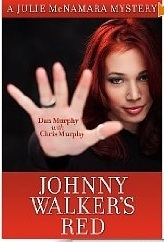 The lesson to be learned from the adventures of our feisty heroine is this:
The lesson to be learned from the adventures of our feisty heroine is this:
Your readers must like your main character, or at least like most of him or her. They must either strongly root for or strongly disagree with the character's choices.They must want the character to win in the end.This is even more pertinent where the main character is the start of a potential series. If you're not interested in the main character and how their life/exploits will unfold, then why will you buy the next book? So while a great plot is essential, the actions and reactions of a well-defined lead character will determine whether your readers will stick around or close the book … forever.
I enjoyed meeting Julie McNamara in Red and since I am going to be reviewing her next adventure Johnny Walker Black, I am looking forward to finding out what she'll get up to next.
Book Review: Just how much trouble can a gal get into by losing her job? With 26-year-old journalist Julie McNamara, plenty! Julie's retrenchment from her job at Polaris magazine catapults her into the kind of seedy world one only reads about. From covering Hollywood A-listers' glamorous and wealthy lifestyles, Julie ends up scraping the bottom of the career barrel somewhat. She is desperate for work and will do just about anything that pays. Her efforts at catching drugged-up rock stars in compromising situations fail miserably since Julie is incapable of working a camera properly. After two hilarious but disastrous attempts, Julie shelves any future plans involving photography. A surprise twist on an ordinary story she had begun prior to her retrenchment opens up a hotbed of scandal involving Maria Gonsalves, the young Latina running for district attorney and her affair with Johnny Walker, the star center fielder for the Los Angeles Dodgers. Her friendship with Johnny (who calls her 'Red') leads her into solving a blackmail scam, with surprising results. However, Julie's big hot story comes when she stumbles upon irregularities in the Reverend Ben Bradford's outreach ministries. It turns out that big bucks are changing hands over the Mexican border. Could the charismatic, straight-as-an-arrow reverend be up to no good? Things go downhill pretty fast and Julie ends up being locked in a truck with fifty illegal immigrants, then kidnapped and imprisoned in a padded cell. But come hell or high water, roll those presses because Julie gets scoop!
Julie is a truly likable character. Smart, sassy, and talented, she is also courageous and really good at her job as an investigative reporter. Her relationship with her widowed father, a retired cop, is outlined in simplest detail, but those pertinent points tell the reader so much about Julie. Julie's backstory, her friendships and relationships are deftly slotted into the story without overwhelming the action because action is what carries the reader on a crazy roller-coaster of events. I found the characters believable, especially Julie. The authors portray the ups and downs, the passions and foolhardiness of a young determined journo in an authentic way. Julie's mad journey unfolds in an easy-to-read style with the heroine's dry understated viewpoint actually making many of the situations even more screamingly funny. This is the kind of read where one does not want to leave Julie hanging by a thread, or off a ledge, or anywhere she might need help. Real, funny, fresh and fast-paced, Julie's story will keep readers turning those pages.
First reviewed for Readers Favorite
 The lesson to be learned from the adventures of our feisty heroine is this:
The lesson to be learned from the adventures of our feisty heroine is this:Your readers must like your main character, or at least like most of him or her. They must either strongly root for or strongly disagree with the character's choices.They must want the character to win in the end.This is even more pertinent where the main character is the start of a potential series. If you're not interested in the main character and how their life/exploits will unfold, then why will you buy the next book? So while a great plot is essential, the actions and reactions of a well-defined lead character will determine whether your readers will stick around or close the book … forever.
I enjoyed meeting Julie McNamara in Red and since I am going to be reviewing her next adventure Johnny Walker Black, I am looking forward to finding out what she'll get up to next.
Book Review: Just how much trouble can a gal get into by losing her job? With 26-year-old journalist Julie McNamara, plenty! Julie's retrenchment from her job at Polaris magazine catapults her into the kind of seedy world one only reads about. From covering Hollywood A-listers' glamorous and wealthy lifestyles, Julie ends up scraping the bottom of the career barrel somewhat. She is desperate for work and will do just about anything that pays. Her efforts at catching drugged-up rock stars in compromising situations fail miserably since Julie is incapable of working a camera properly. After two hilarious but disastrous attempts, Julie shelves any future plans involving photography. A surprise twist on an ordinary story she had begun prior to her retrenchment opens up a hotbed of scandal involving Maria Gonsalves, the young Latina running for district attorney and her affair with Johnny Walker, the star center fielder for the Los Angeles Dodgers. Her friendship with Johnny (who calls her 'Red') leads her into solving a blackmail scam, with surprising results. However, Julie's big hot story comes when she stumbles upon irregularities in the Reverend Ben Bradford's outreach ministries. It turns out that big bucks are changing hands over the Mexican border. Could the charismatic, straight-as-an-arrow reverend be up to no good? Things go downhill pretty fast and Julie ends up being locked in a truck with fifty illegal immigrants, then kidnapped and imprisoned in a padded cell. But come hell or high water, roll those presses because Julie gets scoop!
Julie is a truly likable character. Smart, sassy, and talented, she is also courageous and really good at her job as an investigative reporter. Her relationship with her widowed father, a retired cop, is outlined in simplest detail, but those pertinent points tell the reader so much about Julie. Julie's backstory, her friendships and relationships are deftly slotted into the story without overwhelming the action because action is what carries the reader on a crazy roller-coaster of events. I found the characters believable, especially Julie. The authors portray the ups and downs, the passions and foolhardiness of a young determined journo in an authentic way. Julie's mad journey unfolds in an easy-to-read style with the heroine's dry understated viewpoint actually making many of the situations even more screamingly funny. This is the kind of read where one does not want to leave Julie hanging by a thread, or off a ledge, or anywhere she might need help. Real, funny, fresh and fast-paced, Julie's story will keep readers turning those pages.
First reviewed for Readers Favorite
Published on February 27, 2012 06:14
February 23, 2012
Rejection Letters? You're Not Alone!
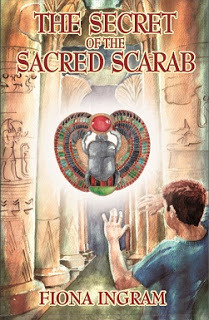
Recently I sent a query letter to an agent in the United States. This was a big step for me. After all, my (now-famous) 35 rejection letters from British agents led to my self-publishing adventure. My book The Secret of the Sacred Scarab went on to win several (quite prestigious, I think) awards and I signed a movie option in 2011 with a British film company. Back to the US agent. He said no. That's right. No. Actually it was a charming email saying the usual sugar-coated stuff that makes you want to go to hell with your eyes open and enjoy the trip, but it was still a no. How could that be, I wondered. I read very carefully the must-have list of requirements and I was positive my book fitted his bill exactly. Apparently not. So what, I wonder, do agents and publishers want? I was fortunate enough to win a signed copy of The Help by Kathryn Stockett through Penguin SA and it reminded me that the author had been rejected 60 times. Yet here she was, at last, published with her book turned into a film. I needn't even cite JK Rowling and Harry Potter, except that (I hope this is not an urban legend) I read somewhere that the only reason Bloomsbury said yes was because the director's 12-year-old child loved it and asked her father to publish it. It sounds true and it's a sweet story anyway. Again, I ask myself, how did people miss the clues? How come agents and publishers are still missing the clues? Need I mention Amanda Hocking? I have decided that this is part of a process that will never be changed. A new writer is rejected; someone sees the light and publishes him/her; everyone throws up their hands and squeals, "How did we miss this gem?" Some happy thoughts below from Writer's Relief, in case you think you're the only one who has ever had a rejection letter. You're in good company!
Many new or mid-level writers have received nasty or rude rejection letters. But when famous author rejection letters come to light, people laugh and say "What were those editors (or literary agents) thinking?" Many big names faced the same kind of adversity (and even hostility) in rejection letters that you may be facing now. Famous author rejection letters teach us a lot!
When you get a harsh rejection letter, keep these famous author rejections in mind.
Happens To the Best of Us: Famous Author Rejection Letters
Check out these excerpts from REAL famous author rejections:
1. Sylvia Plath: There certainly isn't enough genuine talent for us to take notice.
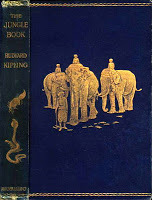 2. Rudyard Kipling: I'm sorry Mr. Kipling, but you just don't know how to use the English language.
2. Rudyard Kipling: I'm sorry Mr. Kipling, but you just don't know how to use the English language.3. J. G. Ballard: The author of this book is beyond psychiatric help.
4. Emily Dickinson: [Your poems] are quite as remarkable for defects as for beauties and are generally devoid of true poetical qualities.
5. Ernest Hemingway (regarding The Torrents of Spring): It would be extremely rotten taste, to say nothing of being horribly cruel, should we want to publish it.
Obviously, these famous author rejection letter phrases have gone down in history for how outrageous they seem to us now. The comments probably had more to do with the mood of the person writing them than with the quality of work. It seems odd to us now that Plath, Kipling, Ballard, Dickinson, and Hemingway were rejected so cruelly. But these comments show us that famous author rejection letters are no different than not-so-famous author rejection letters! Thank goodness these authors kept writing and submitting. Ask yourself: Where would we be if they had given up? We would have missed a lot of important literature!
Famous Author Rejections: Hitting a Dry Spell
Feel glum over oodles of rejection letters? Please note that the examples below are often referenced and we've done quite a lot of research, but as with so many things, there's always a chance for error. Do not cite this article for your academic thesis! Go to the original sources.
1. John Grisham's first novel was rejected 25 times.
2. Jack Canfield and Mark Victor Hansen (Chicken Soup for the Soul) received 134 rejections.
3. Beatrix Potter had so much trouble publishing The Tale of Peter Rabbit, she initially had to self-publish it.
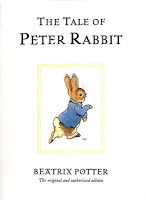 4. Robert Pirsig (Zen and the Art of Motorcycle Maintenance) received 121 rejections before it was published and went on to become a best seller.
4. Robert Pirsig (Zen and the Art of Motorcycle Maintenance) received 121 rejections before it was published and went on to become a best seller.5. Gertrude Stein spent 22 years submitting before getting a single poem accepted.
6. Judy Blume, beloved by children everywhere, received rejections for two straight years.
7. Madeline L'Engle received 26 rejections before getting A Wrinkle in Time published—which went on to win the Newberry Medal and become one of the best-selling children's books of all time.
8. Frank Herbert's Dune was rejected 20 times before being published and becoming a cult classic.
9. Stephen King received dozens of rejections for Carrie before it was published (and made into a movie!).
The Most Rejected Novelist in History?
Author Dick Wimmer passed away on May 18, 2011, at 74 years old. He received 160+ rejections over 25 years! He spent a quarter of a century being told "no." He could have quit after 20 years, or 150 rejections, and no one would have blamed him. But he kept at it (maybe he had his own list of famous author rejection letters to keep him going!). Finally, his novel Irish Wine (Mercury House, 1989) was published to positive reviews. The New York Times called it a "taut, finely written, exhaustingly exuberant first novel."
Assuming the author's submissions were well-targeted, how could 160+ people have passed over Wimmer's book? And what does that mean for YOUR writing career? Wimmer's self-proclaimed legacy is of being the "most rejected novelist," but we think his legacy is hope and persistence.
What's Your Rejection Letter Threshold?
Famous author rejection letters teach us that there are lots of reasons why great works do not get chosen for publication right away (or after 25 years!). But there is only one way to get published: submit, submit, submit!
Writer's Relief (est. 1994) is a highly recommended author submission service. Check out their free publishing leads, calls for submissions, and tips! This article was originally published at the following URL: http://www.writersrelief.com/blog/2011/07/famous-author-rejection-letters/
Published on February 23, 2012 01:31
February 6, 2012
Writing Tips From Downton Abbey
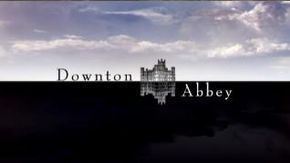 Anyone who has not heard of
Downton Abbey
must be living in a cave. This is one of the most popular series ever filmed, or maybe it's THE most popular series ever filmed. Wikipedia has this to say about it: "Reception of the programme was predominantly positive; ratings were extremely high for what is usually considered a "genre" show, and the first series picked up a number of awards and nominations after its initial run. It has subsequently become the most successful British costume drama since the 1981 television serial version of Brideshead Revisited, and in 2011 it entered the Guinness Book of World Records as the "most critically acclaimed English-language television show" for the year, becoming the first British show to be so recognised. A second series aired in autumn 2011. On 3 November 2011, ITV confirmed that a third series has been commissioned and will be broadcast from September 2012."
Anyone who has not heard of
Downton Abbey
must be living in a cave. This is one of the most popular series ever filmed, or maybe it's THE most popular series ever filmed. Wikipedia has this to say about it: "Reception of the programme was predominantly positive; ratings were extremely high for what is usually considered a "genre" show, and the first series picked up a number of awards and nominations after its initial run. It has subsequently become the most successful British costume drama since the 1981 television serial version of Brideshead Revisited, and in 2011 it entered the Guinness Book of World Records as the "most critically acclaimed English-language television show" for the year, becoming the first British show to be so recognised. A second series aired in autumn 2011. On 3 November 2011, ITV confirmed that a third series has been commissioned and will be broadcast from September 2012."Wow! Now that takes some beating! I am an ardent fan of the series, and having endured nine hours of viewing Series 2 over a weekend, where we languished behind drawn curtains and were sustained by lots of snacks, I was inspired to write a post about this world-wide phenomenon.
Downton Abbey has much to teach any author, the most important lesson being, how to grip the attention of your reader. Ask yourself three questions:
1. Is your story compelling and gripping?
2. Do your characters play out their lives against a backdrop that adds meaning?
3. Are your characters believable?
If all your answers are 'yes' then you have a winner. I asked myself why Downton Abbey enabled hard-to-please me to so easily suspend my disbelief. Aren't the characters just typical soap-opera types dressed up in costumes of yester-year? Maybe, but something about the script and the actors' interpretations renders most criticism invalid. There are examples of stereotypes and clichés in many books. However, not many books can draw a reader in the way viewers have fallen in love with Downton Abbey. I know, I know, the series appeals to our nostalgia for by-gone eras when things were supposedly better and people had more honour/morality/virtues etc. Somehow the tangle of lives and loves, set against the towering backdrop of war-torn Britain has a magical 'Love Potion Number Nine' aura. Irresistible!
 In my (humble) opinion, the script delves brilliantly into the complications of a society in transition. I think only the Brits truly understand and appreciate the intricacies of the class system in their fair isle. The rest of the world must stand back and admire at a distance. Upstairs and downstairs remain firmly separated and never the twain shall meet, lest there be dire consequences. However, there's nothing as strange as the human heart. Lady Sybil, (sorry, my dear), will firmly close all doors to her once she marries beneath her in uniting with the ex-chauffeur Branson. Even the Earl of Grantham (feeling neglected by his beautiful wife Cora) finds his eye straying to pretty and willing housemaid Jane. Relax, she resigns before any damage is done! Maggie Smith, who has all the best lines as the Dowager Countess, encapsulates the mind-set of the era, yet constantly surprises with her practical and sometimes unexpectedly modern outlook.
In my (humble) opinion, the script delves brilliantly into the complications of a society in transition. I think only the Brits truly understand and appreciate the intricacies of the class system in their fair isle. The rest of the world must stand back and admire at a distance. Upstairs and downstairs remain firmly separated and never the twain shall meet, lest there be dire consequences. However, there's nothing as strange as the human heart. Lady Sybil, (sorry, my dear), will firmly close all doors to her once she marries beneath her in uniting with the ex-chauffeur Branson. Even the Earl of Grantham (feeling neglected by his beautiful wife Cora) finds his eye straying to pretty and willing housemaid Jane. Relax, she resigns before any damage is done! Maggie Smith, who has all the best lines as the Dowager Countess, encapsulates the mind-set of the era, yet constantly surprises with her practical and sometimes unexpectedly modern outlook.  I think what appeals to me the most (apart from being raging jealous of anyone who lives in Highclere Castle, the setting for the series) is the intensity of the characters—when they love, they love; when they hate, they hate; when they wobble, they truly fall! And even in their fall from grace or their triumph over odds, the characters carry the viewer with them, right to the end. Of course, films triumph over books because actors can demonstrate in a simple glance, shrug, or expression what it might take the author a few words/lines to create for the reader. But, dear authors, press on, I say. The fact is that the look, sigh, expression, or derogatory snort is part and parcel of the silent inner workings of the characters. I think we forget how much need not be spoken, but simply indicated to 'speak' volumes.
I think what appeals to me the most (apart from being raging jealous of anyone who lives in Highclere Castle, the setting for the series) is the intensity of the characters—when they love, they love; when they hate, they hate; when they wobble, they truly fall! And even in their fall from grace or their triumph over odds, the characters carry the viewer with them, right to the end. Of course, films triumph over books because actors can demonstrate in a simple glance, shrug, or expression what it might take the author a few words/lines to create for the reader. But, dear authors, press on, I say. The fact is that the look, sigh, expression, or derogatory snort is part and parcel of the silent inner workings of the characters. I think we forget how much need not be spoken, but simply indicated to 'speak' volumes.The lesson to be gleaned from Downton Abbey is to create real, convincing characters that will imbue your story with a truth and authenticity that cannot be shaken; to have those characters truly believe in what they represent, want, or plan to do. In addition, make sure your background or backdrop action (Okay, I agree, a world war is a big thing to just whip up in a trice but make do with what you have) as integral as possible to the development of the characters' lives and choices. In Downton Abbey the war in Europe changes British society forever. But that's life: nothing remains static, life moves on… I cannot wait for Series 3!
Published on February 06, 2012 02:36
January 26, 2012
Book Review: The Winds of War
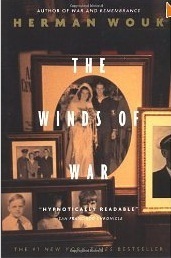 First published in 1971, The Winds of War is aptly described on the cover as `another splendid epic' as well as being compared to Margaret Mitchell's Gone With The Wind. Although such fulsome praise has often been used to describe various tomes, this book deserves such high praise. It is actually the prologue to Wouk's War and Remembrance, and (my tattered old edition) is a 960-pager at that! If you are looking for something that seems to have died out recently, namely, a good old-fashioned read or a solid story, then this is it. Despite being written over forty years ago, there is no sense of being dated, albeit some of the expressions might come across as quaint. The story concerns two families, one Jewish and European, the Jastrows, and the other American and WASP, namely the Henrys. Looming behind the tapestry of lives and loves interlinking is the horrific menace of World War 2. The author is truly a gifted writer in that tackling a subject as monumental as a world war and trying to humanise both friends and foes is daunting. However, this book is superbly written and keeps the reader glued to the pages. Each character brings a unique angle to this novel, even those historical personalities usually relegated to the pages of history books. The stubbornness of elderly academic Aaron Jastrow, who remains in Italy despite the imminent threat of Fascism and Mussolini's pact with Hitler, drags his niece, the strong-willed and beautiful Natalie Jastrow, right into the fray. Pug Henry, a middle-aged US Naval officer, is dismayed to find his youngest son Byron not only gets involved with Natalie, but marries her. When war breaks out she is stranded in war-torn Europe with her cantankerous uncle and a new-born babe. Pug has his own problems with a beautiful but bored and dissatisfied wife (Rhoda) who feels her husband has not achieved the career she had in mind for him. On an observer mission to Europe, Pug himself finds himself attracted to a girl old enough to be his daughter.
First published in 1971, The Winds of War is aptly described on the cover as `another splendid epic' as well as being compared to Margaret Mitchell's Gone With The Wind. Although such fulsome praise has often been used to describe various tomes, this book deserves such high praise. It is actually the prologue to Wouk's War and Remembrance, and (my tattered old edition) is a 960-pager at that! If you are looking for something that seems to have died out recently, namely, a good old-fashioned read or a solid story, then this is it. Despite being written over forty years ago, there is no sense of being dated, albeit some of the expressions might come across as quaint. The story concerns two families, one Jewish and European, the Jastrows, and the other American and WASP, namely the Henrys. Looming behind the tapestry of lives and loves interlinking is the horrific menace of World War 2. The author is truly a gifted writer in that tackling a subject as monumental as a world war and trying to humanise both friends and foes is daunting. However, this book is superbly written and keeps the reader glued to the pages. Each character brings a unique angle to this novel, even those historical personalities usually relegated to the pages of history books. The stubbornness of elderly academic Aaron Jastrow, who remains in Italy despite the imminent threat of Fascism and Mussolini's pact with Hitler, drags his niece, the strong-willed and beautiful Natalie Jastrow, right into the fray. Pug Henry, a middle-aged US Naval officer, is dismayed to find his youngest son Byron not only gets involved with Natalie, but marries her. When war breaks out she is stranded in war-torn Europe with her cantankerous uncle and a new-born babe. Pug has his own problems with a beautiful but bored and dissatisfied wife (Rhoda) who feels her husband has not achieved the career she had in mind for him. On an observer mission to Europe, Pug himself finds himself attracted to a girl old enough to be his daughter.These human conflicts are somehow always uppermost in a story that never succumbs to the weightier issues of war and destruction. I enjoyed the way in which the author deftly creates an intimate viewpoint of the three pivotal characters of the war: Franklin D. Roosevelt, Winston Churchill, and Hitler himself by having Pug Henry at different stages of the novel actually meet and interact with these men. Another interesting angle is Pug's analysis of General Armin van Roon's (fictional) account of the war and the motives and machinations behind Hitler's various invasions and instances of both brilliance and bungling ineptitude. The author also provides a perceptive analysis of the psyche of the nations dragged into the war, and this is a great help in understanding how and why so many people entered into and supported their leaders in what could only be the greatest folly of the century. The book cannot, of course, adequately describe the unspeakable horror of the bombings, the dreadful atrocities perpetrated in the death camps, and many more occasions of wholesale slaughter, but the author does an excellent job of describing these events without sinking into a mire of sentimentality or a ghoulish litany. The book ends as Pearl Harbour is bombed, thus bringing the USA into a war that FD had successfully avoided in an effort to appease the war-shy American public. The bombing of Pearl Harbour, a momentous blunder on the part of Japan propelled the American giant into the war with a unanimous vote (bar one). This is a truly satisfying experience for the readers who want to sink their literary teeth into something solid!
Published on January 26, 2012 01:53
November 14, 2011
Putting the History into Historical Novels
Putting the history into an historical novel is not as easy as it sounds. Although it might seem that just a bit of research and flinging a few facts into the mix will do, trust me, it won't. Historical novels can be both under- and overwhelming. The first kind either have glaring anachronisms, where the hero or heroine living a few hundred years ago comes out with a thoroughly modern saying, or curse, or pattern of speech/behaviour. On the other hand, some writers positively drown their readers in facts that, while interesting and pertinent, are too much. The story is swamped by an excess of detail. How to get it right? The perfect mix is just enough detail to create the setting and keep the reader in the era without an excess of technical and historical detail. I recently reviewed two books by the same author, Lucinda Brant, who has captured the essence of an age (Georgian England) and made it her own. Deft, subtle touches of details place the reader firmly in the history and society of this abundantly opulent age. For a reader like myself, gently reared on Jane Austen, Georgette Heyer and post-Regency plots, the heroics of this brash, endearing, and vital period in history came as a wonderful surprise. I have included my two reviews in the hopes that they will persuade you to discover this eminently readable and skilled historical novelist.
Salt Bride
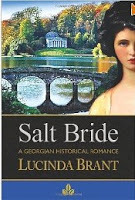 The Earl of Salt Hendon, with good looks, fortune, and the reputation of a lover par excellence, could have any woman he pleased just by crooking his little finger. So when he seemingly lost his reason and married a squire's daughter, Jane Despard, Society is aghast. Despite being a noted beauty, Jane's reputation is clouded, an incident in her past having cast a shadow over her marital prospects. What Society does not know is that Jane and the Earl share a dreadful secret: a past encounter that brought them both nothing but misery, misunderstanding, and mistrust. Their marriage four years after that encounter is sealed so that the Earl can discharge a promise to a dying man and Jane can save her stepbrother from financial ruin. Jane holds out the hope that the Earl will finally come to love her. Her husband, alas, is deeply influenced by the scheming Diana, Lady St. John, widow of his cousin and the mother of his nominated heir, his young godson. Can Jane's love prevail and will the Earl finally open his eyes to the Machiavellian maneuvers of the wicked Lady St. John?
The Earl of Salt Hendon, with good looks, fortune, and the reputation of a lover par excellence, could have any woman he pleased just by crooking his little finger. So when he seemingly lost his reason and married a squire's daughter, Jane Despard, Society is aghast. Despite being a noted beauty, Jane's reputation is clouded, an incident in her past having cast a shadow over her marital prospects. What Society does not know is that Jane and the Earl share a dreadful secret: a past encounter that brought them both nothing but misery, misunderstanding, and mistrust. Their marriage four years after that encounter is sealed so that the Earl can discharge a promise to a dying man and Jane can save her stepbrother from financial ruin. Jane holds out the hope that the Earl will finally come to love her. Her husband, alas, is deeply influenced by the scheming Diana, Lady St. John, widow of his cousin and the mother of his nominated heir, his young godson. Can Jane's love prevail and will the Earl finally open his eyes to the Machiavellian maneuvers of the wicked Lady St. John?
It is the year 1763 and King George III is on the throne. Georgian aristocratic life is synonymous with elegance and a devil-may-care pleasure, and the upper classes enjoy a kind of amorality in their love lives. Men, and women, are inclined to take their pleasure where they choose. It is this angle, the tawdry underbelly of high society that the author captures so brilliantly in this eminently readable novel. The rakish, raucous character of the Georgian period is contrasted superbly with the sophistication of the age. The author has created a love story that fans of historical romance will relish. Details of the politics, manners, social mores, and dress are deftly interspersed within the plot lines to fully flesh out the era and the people in it. The author's characterization, even with secondary characters, is accurate and believable. The plot is complex and interesting; the author guides the reader through the maze of misunderstandings without ever giving the game away. The dialogue is witty and sparkling, with the characters' words often belying their actions and vice versa, thus further adding to the love confusion. I thoroughly enjoyed this book and highly recommend it.
Autumn Duchess
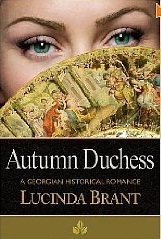 Antonia, Dowager Duchess of Roxton, has been in mourning for three years for her beloved dead husband and soul mate. Antonia has lost the man who meant everything to her and it appears she no longer has any enjoyment for life. That is until Jonathon Strang, a larger-than-life, forceful character bursts into her life like a hurricane, and turns it upside down. Although Antonia is easily ten years older than he is, her amazing beauty and enchanting aura soon have him captivated. Jonathon began life as the second son of an impoverished second son. However, by virtue of hard work and good fortune in the colonies, coupled with several family deaths that have put him in line for a title, Jonathon is very eligible indeed. He also has links with the Roxton family that he wishes to pursue, namely, the illegal misappropriation of property that rightfully is his. One of these properties can only be signed over to him by Antonia herself.
Antonia, Dowager Duchess of Roxton, has been in mourning for three years for her beloved dead husband and soul mate. Antonia has lost the man who meant everything to her and it appears she no longer has any enjoyment for life. That is until Jonathon Strang, a larger-than-life, forceful character bursts into her life like a hurricane, and turns it upside down. Although Antonia is easily ten years older than he is, her amazing beauty and enchanting aura soon have him captivated. Jonathon began life as the second son of an impoverished second son. However, by virtue of hard work and good fortune in the colonies, coupled with several family deaths that have put him in line for a title, Jonathon is very eligible indeed. He also has links with the Roxton family that he wishes to pursue, namely, the illegal misappropriation of property that rightfully is his. One of these properties can only be signed over to him by Antonia herself.
Antonia is initially repelled by the buccaneer; a man whose casual manners are almost insulting in a society obsessed with the niceties of conduct. His blunt approach, his sharp brain, his sense of humor and finally his blatant adoration serve to break down her icy disdain. Set in 1777, in Georgian England, against a backdrop of the imminent French Revolution and the American War of Independence, this compelling love story will appeal to romantics of all ages.
I recently reviewed Salt Bride by the same author and was keen to revisit Georgian England. Lucinda Brant has carved a niche for herself in this particular patch of history and she is gifted in weaving both story and history into a compelling read. Passion is the keynote of this novel; abundantly clear in the passion of the main characters, the robust energy of the age, and the pulse of action that creates an energetic and well-paced novel. The author has a wonderful turn of phrase, creating a sense of the opulence and oftentimes excessive luxuriance of the era. Food, drink, clothing, entertainment, appetites are all described in glowing detail in an era that celebrated abundance and sensual gratification. Although this is the third book in a series, and readers would derive even greater enjoyment by reading the first two as well, this story stands alone with enough back history threaded through to keep readers in touch with prior events. Highly recommended.
Both books by Lucinda Brant first reviewed for Readers Favorite by Fiona Ingram
Salt Bride
 The Earl of Salt Hendon, with good looks, fortune, and the reputation of a lover par excellence, could have any woman he pleased just by crooking his little finger. So when he seemingly lost his reason and married a squire's daughter, Jane Despard, Society is aghast. Despite being a noted beauty, Jane's reputation is clouded, an incident in her past having cast a shadow over her marital prospects. What Society does not know is that Jane and the Earl share a dreadful secret: a past encounter that brought them both nothing but misery, misunderstanding, and mistrust. Their marriage four years after that encounter is sealed so that the Earl can discharge a promise to a dying man and Jane can save her stepbrother from financial ruin. Jane holds out the hope that the Earl will finally come to love her. Her husband, alas, is deeply influenced by the scheming Diana, Lady St. John, widow of his cousin and the mother of his nominated heir, his young godson. Can Jane's love prevail and will the Earl finally open his eyes to the Machiavellian maneuvers of the wicked Lady St. John?
The Earl of Salt Hendon, with good looks, fortune, and the reputation of a lover par excellence, could have any woman he pleased just by crooking his little finger. So when he seemingly lost his reason and married a squire's daughter, Jane Despard, Society is aghast. Despite being a noted beauty, Jane's reputation is clouded, an incident in her past having cast a shadow over her marital prospects. What Society does not know is that Jane and the Earl share a dreadful secret: a past encounter that brought them both nothing but misery, misunderstanding, and mistrust. Their marriage four years after that encounter is sealed so that the Earl can discharge a promise to a dying man and Jane can save her stepbrother from financial ruin. Jane holds out the hope that the Earl will finally come to love her. Her husband, alas, is deeply influenced by the scheming Diana, Lady St. John, widow of his cousin and the mother of his nominated heir, his young godson. Can Jane's love prevail and will the Earl finally open his eyes to the Machiavellian maneuvers of the wicked Lady St. John?It is the year 1763 and King George III is on the throne. Georgian aristocratic life is synonymous with elegance and a devil-may-care pleasure, and the upper classes enjoy a kind of amorality in their love lives. Men, and women, are inclined to take their pleasure where they choose. It is this angle, the tawdry underbelly of high society that the author captures so brilliantly in this eminently readable novel. The rakish, raucous character of the Georgian period is contrasted superbly with the sophistication of the age. The author has created a love story that fans of historical romance will relish. Details of the politics, manners, social mores, and dress are deftly interspersed within the plot lines to fully flesh out the era and the people in it. The author's characterization, even with secondary characters, is accurate and believable. The plot is complex and interesting; the author guides the reader through the maze of misunderstandings without ever giving the game away. The dialogue is witty and sparkling, with the characters' words often belying their actions and vice versa, thus further adding to the love confusion. I thoroughly enjoyed this book and highly recommend it.
Autumn Duchess
 Antonia, Dowager Duchess of Roxton, has been in mourning for three years for her beloved dead husband and soul mate. Antonia has lost the man who meant everything to her and it appears she no longer has any enjoyment for life. That is until Jonathon Strang, a larger-than-life, forceful character bursts into her life like a hurricane, and turns it upside down. Although Antonia is easily ten years older than he is, her amazing beauty and enchanting aura soon have him captivated. Jonathon began life as the second son of an impoverished second son. However, by virtue of hard work and good fortune in the colonies, coupled with several family deaths that have put him in line for a title, Jonathon is very eligible indeed. He also has links with the Roxton family that he wishes to pursue, namely, the illegal misappropriation of property that rightfully is his. One of these properties can only be signed over to him by Antonia herself.
Antonia, Dowager Duchess of Roxton, has been in mourning for three years for her beloved dead husband and soul mate. Antonia has lost the man who meant everything to her and it appears she no longer has any enjoyment for life. That is until Jonathon Strang, a larger-than-life, forceful character bursts into her life like a hurricane, and turns it upside down. Although Antonia is easily ten years older than he is, her amazing beauty and enchanting aura soon have him captivated. Jonathon began life as the second son of an impoverished second son. However, by virtue of hard work and good fortune in the colonies, coupled with several family deaths that have put him in line for a title, Jonathon is very eligible indeed. He also has links with the Roxton family that he wishes to pursue, namely, the illegal misappropriation of property that rightfully is his. One of these properties can only be signed over to him by Antonia herself. Antonia is initially repelled by the buccaneer; a man whose casual manners are almost insulting in a society obsessed with the niceties of conduct. His blunt approach, his sharp brain, his sense of humor and finally his blatant adoration serve to break down her icy disdain. Set in 1777, in Georgian England, against a backdrop of the imminent French Revolution and the American War of Independence, this compelling love story will appeal to romantics of all ages.
I recently reviewed Salt Bride by the same author and was keen to revisit Georgian England. Lucinda Brant has carved a niche for herself in this particular patch of history and she is gifted in weaving both story and history into a compelling read. Passion is the keynote of this novel; abundantly clear in the passion of the main characters, the robust energy of the age, and the pulse of action that creates an energetic and well-paced novel. The author has a wonderful turn of phrase, creating a sense of the opulence and oftentimes excessive luxuriance of the era. Food, drink, clothing, entertainment, appetites are all described in glowing detail in an era that celebrated abundance and sensual gratification. Although this is the third book in a series, and readers would derive even greater enjoyment by reading the first two as well, this story stands alone with enough back history threaded through to keep readers in touch with prior events. Highly recommended.
Both books by Lucinda Brant first reviewed for Readers Favorite by Fiona Ingram
Published on November 14, 2011 05:31
October 17, 2011
Book Review: Tribe
Oh, for a good book ... one with action, a layered plot, something interesting like a fresh viewpoint on politics and/or life. I have been struggling recently with finding a 'real' book. By that I mean dialogue, or inner monologue that sounds just like real people would speak, a viewpont that makes me think, "Yes!" or "No!" I read a lot of non-fiction while researching my children's book series and have been disappointed in my efforts to find some fiction to relax with. Many books just do not sound or seem 'real.' Either I don't believe the characters, or I don't like the characters (not a train smash) or else the themes don't grab me. Luckily, reviewing for Readers' Favorite allows me to choose from a wide range of possible me-pleasers. TRIBE is basically an exceptional book. It's the kind of book that is so interesting you wish the author had given you more information, more insight, more detail to chew over while the battle rages on. I will certainly read more of the books this author has already produced.
TRIBE by James Bruno
 Meet Harry Brennan, CIA officer and go-to guy on Afghanistan. When his mission in Afghanistan is aborted and he finds himself back in Washington, Harry starts digging until he finds out what everyone doesn't want him to know. And it comes as no surprise to Harry that it's all about money, or oil to be exact. As the Western world's need for oil increases, something must be done to break the stranglehold of the Arab world on oil supplies. A secret deal has been struck to get a U.S.-financed trans-Central Asian oil pipeline to the Arabian Sea built through Afghanistan and Pakistan. This scenario would bring Croesus-like wealth for the oil companies, back-channel cash to politicians and cement American political and economic supremacy in Central Asia at Russia's expense. It would also force the Afghan allies to share power with the Taliban so pipelines could be built and US troops finally withdrawn. Harry becomes enmeshed in the double and triple cross of the relentless Washington political machine. In a surprise turn of events, Harry finds himself branded a traitor and fleeing for his life from jihadists in Afghanistan and Predator drones in Yemen, a target of his own CIA, while trying to rescue his kidnapped daughter.
Meet Harry Brennan, CIA officer and go-to guy on Afghanistan. When his mission in Afghanistan is aborted and he finds himself back in Washington, Harry starts digging until he finds out what everyone doesn't want him to know. And it comes as no surprise to Harry that it's all about money, or oil to be exact. As the Western world's need for oil increases, something must be done to break the stranglehold of the Arab world on oil supplies. A secret deal has been struck to get a U.S.-financed trans-Central Asian oil pipeline to the Arabian Sea built through Afghanistan and Pakistan. This scenario would bring Croesus-like wealth for the oil companies, back-channel cash to politicians and cement American political and economic supremacy in Central Asia at Russia's expense. It would also force the Afghan allies to share power with the Taliban so pipelines could be built and US troops finally withdrawn. Harry becomes enmeshed in the double and triple cross of the relentless Washington political machine. In a surprise turn of events, Harry finds himself branded a traitor and fleeing for his life from jihadists in Afghanistan and Predator drones in Yemen, a target of his own CIA, while trying to rescue his kidnapped daughter.
This is a brilliant book that is well-paced and -plotted with many interesting layers. The author has created in Harry Brennan a likeable character, with a conscience that compels him to do the right thing. The author is a former insider and the book has undergone US government censorship, which explains the occasional 'vague' patch. However, nothing can detract from this riveting read. Harry Brennan's dry, laid-back inner monologue adds to the appeal of the author's style. Readers will also enjoy Harry's pertinent, humorous references to the books, movies, and well-known personalities of popular culture that underscore his worn, somewhat cynical take on politics. The author has an eye for detail and a style of rich description that the eager reader can feast upon. I really enjoyed this book. Highly recommended.
First reviewed for Readers' Favorite
TRIBE by James Bruno
 Meet Harry Brennan, CIA officer and go-to guy on Afghanistan. When his mission in Afghanistan is aborted and he finds himself back in Washington, Harry starts digging until he finds out what everyone doesn't want him to know. And it comes as no surprise to Harry that it's all about money, or oil to be exact. As the Western world's need for oil increases, something must be done to break the stranglehold of the Arab world on oil supplies. A secret deal has been struck to get a U.S.-financed trans-Central Asian oil pipeline to the Arabian Sea built through Afghanistan and Pakistan. This scenario would bring Croesus-like wealth for the oil companies, back-channel cash to politicians and cement American political and economic supremacy in Central Asia at Russia's expense. It would also force the Afghan allies to share power with the Taliban so pipelines could be built and US troops finally withdrawn. Harry becomes enmeshed in the double and triple cross of the relentless Washington political machine. In a surprise turn of events, Harry finds himself branded a traitor and fleeing for his life from jihadists in Afghanistan and Predator drones in Yemen, a target of his own CIA, while trying to rescue his kidnapped daughter.
Meet Harry Brennan, CIA officer and go-to guy on Afghanistan. When his mission in Afghanistan is aborted and he finds himself back in Washington, Harry starts digging until he finds out what everyone doesn't want him to know. And it comes as no surprise to Harry that it's all about money, or oil to be exact. As the Western world's need for oil increases, something must be done to break the stranglehold of the Arab world on oil supplies. A secret deal has been struck to get a U.S.-financed trans-Central Asian oil pipeline to the Arabian Sea built through Afghanistan and Pakistan. This scenario would bring Croesus-like wealth for the oil companies, back-channel cash to politicians and cement American political and economic supremacy in Central Asia at Russia's expense. It would also force the Afghan allies to share power with the Taliban so pipelines could be built and US troops finally withdrawn. Harry becomes enmeshed in the double and triple cross of the relentless Washington political machine. In a surprise turn of events, Harry finds himself branded a traitor and fleeing for his life from jihadists in Afghanistan and Predator drones in Yemen, a target of his own CIA, while trying to rescue his kidnapped daughter.This is a brilliant book that is well-paced and -plotted with many interesting layers. The author has created in Harry Brennan a likeable character, with a conscience that compels him to do the right thing. The author is a former insider and the book has undergone US government censorship, which explains the occasional 'vague' patch. However, nothing can detract from this riveting read. Harry Brennan's dry, laid-back inner monologue adds to the appeal of the author's style. Readers will also enjoy Harry's pertinent, humorous references to the books, movies, and well-known personalities of popular culture that underscore his worn, somewhat cynical take on politics. The author has an eye for detail and a style of rich description that the eager reader can feast upon. I really enjoyed this book. Highly recommended.
First reviewed for Readers' Favorite
Published on October 17, 2011 05:19
September 29, 2011
Not Just a Pretty Face(Book)!
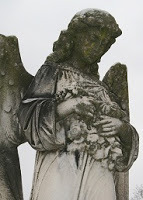 RIP poor blogger! I was recently inspired by a blog post to drag myself out of my Slough of Blogging Despond. The post was by the excellent blogger Roni Loren, entitled 'Is Blogging Dead?' Please read it. I found myself overwhelmed by the plethora of very much cleverer-than-mine blog pieces, and despite my promise of last year to cut down on subscriptions, I fear they have crept up and I now read even more incredibly intelligent posts. Plus, some of my favorite bloggers I follow now include loads of even cleverer pieces by people I have never heard of; I felt could not compete with them! My blogging enthusiasm died and my ideas for cute, inventive posts withered. After all, I reasoned, how can I compete with bloggers who create wonderful posts about developing characters when some of mine literally just arrive on my computer screen, fully fledged and grown? Sigh. But Roni's piece got me all fired up again because at least I felt someone understood my problem. Then I just completed a tour with the wonderful World of Ink/Stories for Children and got such a great response I reasoned that maybe there is life after blogging. Still short on ideas, I drew some inspiration from a post by one of my favorite people in the publishing industry Penny Sansevieri. Here's her take on how to commit social suicide, or something like that.
RIP poor blogger! I was recently inspired by a blog post to drag myself out of my Slough of Blogging Despond. The post was by the excellent blogger Roni Loren, entitled 'Is Blogging Dead?' Please read it. I found myself overwhelmed by the plethora of very much cleverer-than-mine blog pieces, and despite my promise of last year to cut down on subscriptions, I fear they have crept up and I now read even more incredibly intelligent posts. Plus, some of my favorite bloggers I follow now include loads of even cleverer pieces by people I have never heard of; I felt could not compete with them! My blogging enthusiasm died and my ideas for cute, inventive posts withered. After all, I reasoned, how can I compete with bloggers who create wonderful posts about developing characters when some of mine literally just arrive on my computer screen, fully fledged and grown? Sigh. But Roni's piece got me all fired up again because at least I felt someone understood my problem. Then I just completed a tour with the wonderful World of Ink/Stories for Children and got such a great response I reasoned that maybe there is life after blogging. Still short on ideas, I drew some inspiration from a post by one of my favorite people in the publishing industry Penny Sansevieri. Here's her take on how to commit social suicide, or something like that.
The Quickest Way to Kill Your Online Success
Penny says: I have a friend who lives in San Diego. She and her boyfriend rented this lovely home outside of the city. They have tons of land, a great house. It was really a fantastic deal. Since they were in such a good place, the rent was cheap and they had no intention of moving anytime soon, they decided to do some minor renovations to the house. This became their "weekend warrior" project. They'd paint, tinker, plant and in the end, they had a great and slightly improved property. Then one day the owner stopped by for a visit. "Bad news," he said, "I need to sell this property and I have a buyer who wants to offer top dollar, in a market like this I'm sure you understand why I need to take it." They had 30 days to move out.
Now, you might think this is a very sad and unfair situation, but it happens all the time. And it doesn't just happen to real estate, it happens online too. It's a great thing, this social networking, but what a lot of people forget is that you don't own the sites you are populating. While Facebook owns the world (pretty much) right now, things could change. But more than that, sometimes a slight "uh-oh" from you and a slight violation of the site's terms of service can cause you a world of grief. We had a client several years ago who built up 5,000 friends on his personal profile. I kept cautioning him about doing promotion on that page as Facebook has rules against doing promotion on a personal profile. He continued to do promotion (though not heavy) and lost his page. He never got it back. His entire tribe of 5,000 people was lost in the minute it took Facebook to pull down that page.
Don't get me wrong, it's great to utilize these tools and promote yourself, but just remember: as much as you might feel "at home" on Facebook, LinkedIn, Google+, YouTube, and Twitter, you don't own these properties. They do. Be smart and make sure you aren't making these sites the center of your success. Here are a few tips to help you own your real estate:
Website. You should always, always, always have a website. I know some authors who use Facebook as their websites. Big mistake. I know other authors who get a website that doesn't belong to them, meaning they are part of a community of free sites they don't own. If the community decides to stop doing websites and goes away, guess what happens? So does your content.
Smart Social Media . One of the things I really recommend is that you center all of your content around your website. That's partially why I suggest linking your blog to Facebook and Twitter. The content starts on your site and gets funneled from there, rather than in reverse.
Other Ways to Promote. Consider other ways to promote your stuff that isn't social media centric. Interviews on (other) blogs or websites, for instance. Yes, you are still putting stuff out there on other sites, I'm not saying not to. I'm saying that you need to make sure that whatever content you put out there is reflected on your site as well.
Duplicate Content. There's a problem with posting huge amounts of duplicate content online, but unless you are pushing hundreds of pieces out a month, I doubt you have anything to worry about. However, the flip side is that you want to make sure you have copies of all the content you put out there. If you're uploading a video on YouTube, don't delete it off of your computer because you think it's "safe" on this site. It may very well be, but if you lose your page or YouTube gets bought (again) and morphs into something else, you're in trouble.
Enhanced Website. When I talked about having a website, I'm not just talking about having a one or two-pager. I mean have a robust site packed with content. Make sure that you have a blog, and you might consider adding a resource section, etc. All information about your books should be on the site (don't rely on Amazon to house this for you) and be sure that any ordering information is on your site as well. Wait! You might ask, is Amazon in danger of going away? Not likely. But as they've shown in the past by pulling down books and buy buttons without warning: Amazon can do whatever it wants.
 Gotta love that traffic!
Traffic.
So, the nitty gritty of promotion is what? Sales, right? Sure, and exposure too (though I think you should target exposure first, then sales, but that's another article). If you're sending all of your traffic to social media sites, guess what? Your website traffic is probably pretty low or non-existent. If you send traffic to social media sites guess who benefits? Well, certainly you do in the way of exposure, but long-term this isn't a good plan. Let me explain why.
Gotta love that traffic!
Traffic.
So, the nitty gritty of promotion is what? Sales, right? Sure, and exposure too (though I think you should target exposure first, then sales, but that's another article). If you're sending all of your traffic to social media sites, guess what? Your website traffic is probably pretty low or non-existent. If you send traffic to social media sites guess who benefits? Well, certainly you do in the way of exposure, but long-term this isn't a good plan. Let me explain why.
If you aren't promoting your site as the center of the universe, and instead pushing people to social media sites, then your website isn't getting those super valuable incoming links from blogs, websites, etc. that you are promoting yourself to. As a result, your site will sink in Google rankings. That means if you lost one or more of your social media sites, you could certainly pick up the pieces and start sending people to your site, but that will be a long, hard haul. Better to focus on that now and gather that traffic, along with the buzz you create in social media, so you aren't caught with a zero starting point if anything happens.
You might think that the moral of this story is a slightly paranoid "trust no one" mantra but it's not. It's about protecting your stuff and being a smart and savvy author. You would never open up a store in a mall without a lease that locked you in for a certain amount of time, right? While there are no guarantees in anything, you need to be smart about all of these wonderful, free, not-owned-by-you social media sites. You might do a fantastic job of driving traffic, fans, and likes to various pages. But the reality is that you should focus on what you own, your website. I love my social media sites and yes, it's a widely known fact that I'm addicted to Twitter. Yet they aren't the center of my online universe, my website is. Yours should be, too.
Reprinted from "The Book Marketing Expert newsletter," a free ezine offering book promotion and publicity tips and techniques.
 RIP poor blogger! I was recently inspired by a blog post to drag myself out of my Slough of Blogging Despond. The post was by the excellent blogger Roni Loren, entitled 'Is Blogging Dead?' Please read it. I found myself overwhelmed by the plethora of very much cleverer-than-mine blog pieces, and despite my promise of last year to cut down on subscriptions, I fear they have crept up and I now read even more incredibly intelligent posts. Plus, some of my favorite bloggers I follow now include loads of even cleverer pieces by people I have never heard of; I felt could not compete with them! My blogging enthusiasm died and my ideas for cute, inventive posts withered. After all, I reasoned, how can I compete with bloggers who create wonderful posts about developing characters when some of mine literally just arrive on my computer screen, fully fledged and grown? Sigh. But Roni's piece got me all fired up again because at least I felt someone understood my problem. Then I just completed a tour with the wonderful World of Ink/Stories for Children and got such a great response I reasoned that maybe there is life after blogging. Still short on ideas, I drew some inspiration from a post by one of my favorite people in the publishing industry Penny Sansevieri. Here's her take on how to commit social suicide, or something like that.
RIP poor blogger! I was recently inspired by a blog post to drag myself out of my Slough of Blogging Despond. The post was by the excellent blogger Roni Loren, entitled 'Is Blogging Dead?' Please read it. I found myself overwhelmed by the plethora of very much cleverer-than-mine blog pieces, and despite my promise of last year to cut down on subscriptions, I fear they have crept up and I now read even more incredibly intelligent posts. Plus, some of my favorite bloggers I follow now include loads of even cleverer pieces by people I have never heard of; I felt could not compete with them! My blogging enthusiasm died and my ideas for cute, inventive posts withered. After all, I reasoned, how can I compete with bloggers who create wonderful posts about developing characters when some of mine literally just arrive on my computer screen, fully fledged and grown? Sigh. But Roni's piece got me all fired up again because at least I felt someone understood my problem. Then I just completed a tour with the wonderful World of Ink/Stories for Children and got such a great response I reasoned that maybe there is life after blogging. Still short on ideas, I drew some inspiration from a post by one of my favorite people in the publishing industry Penny Sansevieri. Here's her take on how to commit social suicide, or something like that.The Quickest Way to Kill Your Online Success
Penny says: I have a friend who lives in San Diego. She and her boyfriend rented this lovely home outside of the city. They have tons of land, a great house. It was really a fantastic deal. Since they were in such a good place, the rent was cheap and they had no intention of moving anytime soon, they decided to do some minor renovations to the house. This became their "weekend warrior" project. They'd paint, tinker, plant and in the end, they had a great and slightly improved property. Then one day the owner stopped by for a visit. "Bad news," he said, "I need to sell this property and I have a buyer who wants to offer top dollar, in a market like this I'm sure you understand why I need to take it." They had 30 days to move out.
Now, you might think this is a very sad and unfair situation, but it happens all the time. And it doesn't just happen to real estate, it happens online too. It's a great thing, this social networking, but what a lot of people forget is that you don't own the sites you are populating. While Facebook owns the world (pretty much) right now, things could change. But more than that, sometimes a slight "uh-oh" from you and a slight violation of the site's terms of service can cause you a world of grief. We had a client several years ago who built up 5,000 friends on his personal profile. I kept cautioning him about doing promotion on that page as Facebook has rules against doing promotion on a personal profile. He continued to do promotion (though not heavy) and lost his page. He never got it back. His entire tribe of 5,000 people was lost in the minute it took Facebook to pull down that page.
Don't get me wrong, it's great to utilize these tools and promote yourself, but just remember: as much as you might feel "at home" on Facebook, LinkedIn, Google+, YouTube, and Twitter, you don't own these properties. They do. Be smart and make sure you aren't making these sites the center of your success. Here are a few tips to help you own your real estate:
Website. You should always, always, always have a website. I know some authors who use Facebook as their websites. Big mistake. I know other authors who get a website that doesn't belong to them, meaning they are part of a community of free sites they don't own. If the community decides to stop doing websites and goes away, guess what happens? So does your content.
Smart Social Media . One of the things I really recommend is that you center all of your content around your website. That's partially why I suggest linking your blog to Facebook and Twitter. The content starts on your site and gets funneled from there, rather than in reverse.
Other Ways to Promote. Consider other ways to promote your stuff that isn't social media centric. Interviews on (other) blogs or websites, for instance. Yes, you are still putting stuff out there on other sites, I'm not saying not to. I'm saying that you need to make sure that whatever content you put out there is reflected on your site as well.
Duplicate Content. There's a problem with posting huge amounts of duplicate content online, but unless you are pushing hundreds of pieces out a month, I doubt you have anything to worry about. However, the flip side is that you want to make sure you have copies of all the content you put out there. If you're uploading a video on YouTube, don't delete it off of your computer because you think it's "safe" on this site. It may very well be, but if you lose your page or YouTube gets bought (again) and morphs into something else, you're in trouble.
Enhanced Website. When I talked about having a website, I'm not just talking about having a one or two-pager. I mean have a robust site packed with content. Make sure that you have a blog, and you might consider adding a resource section, etc. All information about your books should be on the site (don't rely on Amazon to house this for you) and be sure that any ordering information is on your site as well. Wait! You might ask, is Amazon in danger of going away? Not likely. But as they've shown in the past by pulling down books and buy buttons without warning: Amazon can do whatever it wants.
 Gotta love that traffic!
Traffic.
So, the nitty gritty of promotion is what? Sales, right? Sure, and exposure too (though I think you should target exposure first, then sales, but that's another article). If you're sending all of your traffic to social media sites, guess what? Your website traffic is probably pretty low or non-existent. If you send traffic to social media sites guess who benefits? Well, certainly you do in the way of exposure, but long-term this isn't a good plan. Let me explain why.
Gotta love that traffic!
Traffic.
So, the nitty gritty of promotion is what? Sales, right? Sure, and exposure too (though I think you should target exposure first, then sales, but that's another article). If you're sending all of your traffic to social media sites, guess what? Your website traffic is probably pretty low or non-existent. If you send traffic to social media sites guess who benefits? Well, certainly you do in the way of exposure, but long-term this isn't a good plan. Let me explain why.If you aren't promoting your site as the center of the universe, and instead pushing people to social media sites, then your website isn't getting those super valuable incoming links from blogs, websites, etc. that you are promoting yourself to. As a result, your site will sink in Google rankings. That means if you lost one or more of your social media sites, you could certainly pick up the pieces and start sending people to your site, but that will be a long, hard haul. Better to focus on that now and gather that traffic, along with the buzz you create in social media, so you aren't caught with a zero starting point if anything happens.
You might think that the moral of this story is a slightly paranoid "trust no one" mantra but it's not. It's about protecting your stuff and being a smart and savvy author. You would never open up a store in a mall without a lease that locked you in for a certain amount of time, right? While there are no guarantees in anything, you need to be smart about all of these wonderful, free, not-owned-by-you social media sites. You might do a fantastic job of driving traffic, fans, and likes to various pages. But the reality is that you should focus on what you own, your website. I love my social media sites and yes, it's a widely known fact that I'm addicted to Twitter. Yet they aren't the center of my online universe, my website is. Yours should be, too.
Reprinted from "The Book Marketing Expert newsletter," a free ezine offering book promotion and publicity tips and techniques.
Published on September 29, 2011 07:29
August 28, 2011
30 Ways to Woo the Media
 There is a reason so many pitches get rejected by the media. On average, the media rejects 95% of pitches they get. How can you become part of the 5% that get picked up for a story? First, you need to know the reasons why pitches get rejected. Keep in mind these aren't the only reasons, but certainly the majority of them:
There is a reason so many pitches get rejected by the media. On average, the media rejects 95% of pitches they get. How can you become part of the 5% that get picked up for a story? First, you need to know the reasons why pitches get rejected. Keep in mind these aren't the only reasons, but certainly the majority of them: Uninteresting email subject lines: Often your pitch is judged by the subject line. Make it something interesting, make it a headline or risk getting relegated to the delete bin.
Long emails: I don't know about you, but I hate reading long emails. The media hates it even more, in fact many of my media friends have told me that if they have to scroll through a pitch, they often won't consider it unless it comes from a very trusted source. How long is too long? If you can read it on the screen without scrolling down, you're in good shape.
Non-compelling topics: You won't get attention for your topic just because you pitch it. It has to be timely, unique, and relevant to the audience they serve. Think HUH: Hip, Unique, and Helpful.
An opened email isn't always a sure bet: Even if your email gets opened, it might still get deleted, here's why: For all of the above reasons. Create a tight, focused pitch that isn't too long and stays on topic. This will increase your chances that the media will read it through.
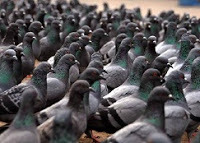 Not relevant: What I mean by this is that it's not relevant to the audience the media outlet serves. Don't think for a minute that just because you find it interesting and compelling that your media target will. For example, I once had an author tell me about the amazing world of fly fishing, and then insist that Oprah would be interested in this topic. Really? I think not so much. Watch the show, listen to the broadcast, or read the blog or publication - before pitching.
Not relevant: What I mean by this is that it's not relevant to the audience the media outlet serves. Don't think for a minute that just because you find it interesting and compelling that your media target will. For example, I once had an author tell me about the amazing world of fly fishing, and then insist that Oprah would be interested in this topic. Really? I think not so much. Watch the show, listen to the broadcast, or read the blog or publication - before pitching. A false sense of urgency: Often I find that folks pitching, in order to get noticed, will call upon a false sense of urgency. Yes, it's urgent that we fix our school systems. Yes, it's urgent that we clean up the environment. Neither of these things is going to blow up tomorrow so don't pitch them as though they are. While it might make for a more compelling pitch, it will only serve to paint you as an unreliable and often excitable source. Neither of these is good.
Unknown senders: An unknown source or sender may be considered an unreliable one. It's easy enough to get to know the media long before you start pitching. And I highly recommend that you do so.
Now, let's look at 30 things you can do to make yourself, and your pitches, irresistible to the media!
1) Start early and Focus on Relationships.
2) Connect on Twitter, Facebook, and LinkedIn: get to know your media, connect with any local and national reporters, journalists, and news people via these social sites so you can get to know them.
3) Comment on postings via Twitter and Facebook: comment on their postings and news when appropriate.
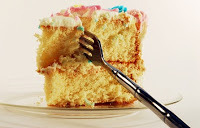 4) Facebook birthdays: this is a great way to connect to everyone on your list, especially media. Wish them a happy birthday, they'll appreciate it.
4) Facebook birthdays: this is a great way to connect to everyone on your list, especially media. Wish them a happy birthday, they'll appreciate it. 5) Watch those Twitter hashtags: as you follow your media, you'll start to see a trend of most-used Twitter hashtags, I highly recommend you follow them so you can see who else is talking about the story.
6) Blog about them on your site, referencing a recent story they did.
7) Comment on their stories, whether it's on their site or on their media site.
8) Sign up for Helpareporter.com (HARO) and respond to stories appropriate to your topic.
9) Get to know your smaller, regional publications, and also trade publications. Both of these tend to be easier to get to and could offer you some exposure well in advance of your book launch.
10) Get to know your local radio hosts, or the hosts of stations you'll be targeting. Especially in radio, it's great to get connected to the broadcast people as early as you can. They also tend to be pretty accessible.
11) Go to events where you know you might meet some media folk. This is often a great way to engage them on mutual ground. Attending the same event is a great way to start a dialog or relationship with the media.
12) Practice your elevator pitch! What's an elevator pitch? It's a short, succinct description of your topic or pitch. Short enough to keep them interested (1-2 sentences) but long enough to tell the story, or at least the headline.
13) Become a source for your target media: becoming a media source is something we'd all love to do. But this takes time. By getting to know your media, commenting on stories they write and letting them know your area of expertise, you might become one of their regular sources!
14) Become a connector: be the person the media goes to for other experts as well. How do you do this? Whenever you introduce yourself to media, make sure they know your area of expertise and your ability to connect them to other experts who might be helpful as well.
15) Every now and then, I will share a blog post with a journalist that I think will be helpful to them. I don't do this a lot - just every once in a while.
 16) Be succinct: define your story in one sentence. Keep it short, sweet, and relevant to your topic.
16) Be succinct: define your story in one sentence. Keep it short, sweet, and relevant to your topic. 17) Sell the benefits, not the features. The media cares about what consumers care about, and all they want are benefits.
18) Make sure the media person has all the information he or she needs prior to the interview. This is especially true for late/breaking news. If there are new developments, make sure they are aware of them. This will save them research time and make them look good!
19) Speaking of making media look good, this is your job as well. Yes! It's important to make them look good, give them a set of questions, a synopsis about the book or interview topic and be prepared in case they ask you a question that doesn't seem quite right. Sometimes the person who is interviewing you doesn't get the media packet until 10 minutes before they go on, which doesn't leave them a lot of time to prepare. Be sure to help make their job easy!
20) Jump on breaking news when it happens and be ready when the media calls.
21) Be flexible. If a reporter covering a big story wants to chat with you on a weekend or late at night/early morning, say Yes.
22) Be excited about your topic: if you're not excited, how do you expect the media to be?
23) Never, ever give up. It might take a while for you to hear back, and sometimes (most times) the media won't respond to you until they have a need for your story.
24) Keep it short. Write short emails, always. Generally media folk are on email overload anyway; don't add to that with long, elaborate emails.
25) Think locally when appropriate: craft a local spin to a national story. While local media will always cover local, they love regional angles to stories that are making national news.
26) Stay on topic: when you do get the interview, stay on topic. Don't stray all over the place, you will confuse the media person and you'll end up getting a much smaller piece of a story if you look too fragmented.
27) Respond immediately: even if you are on vacation, reply right away to all media queries.
28) Don't tell the media anything you don't want to see in print. Assume everything you say is "on the record" even if you ask them to keep it confidential. I've seen authors say "well, off the record;" when it comes to media, assume there's no such thing.
29) Avoid slang and industry jargon: it will confuse the media.
30) Be grateful: always. Send a handwritten thank you note after an interview, and even if you didn't get the interview for which you were being considered, send a note of thanks anyway and wish them well on their story.
When it comes to media, get started as early as you can and build those relationships. Remember that while the delete rate of pitches is high, they are still in need of great guests, interviews, and stories. Be all those things and you'll not only be irresistible to the media, but you'll get a lot of placements that could really help launch your career!
Reprinted from "The Book Marketing Expert newsletter," a free ezine offering book promotion and publicity tips and techniques.
Published on August 28, 2011 04:48
August 18, 2011
Five Top Tips to Make Reading Rock!

With the plethora of gadgets and technology at their fingertips, getting kids to open a book seems a daunting task for many parents. However, as any parent knows, when kids are interested in something, it's hard to tear them away from it! You can turn your kids into avid readers by making reading exciting and interactive. Creative and interesting approaches to reading will transform this activity into something novel and stimulating. These tips will also enhance your child's reading experience, encouraging them to think more deeply about the characters and themes in books, while having a whole lot of fun! My guest post today comes from Susan Black, who is a freelance writer and mother of two pre-teens.
FIVE TOP TIPS TO MAKE READING ROCK!
As pleasurable as reading is there are many ways to engage with a book other than simply reading it. Active reading strategies help young readers formulate their own ideas about characters, events and themes in literature. Outlined below are 5 active reading strategies to try with younger readers.
Strategy One: The Treasure Box
 Whilst reading a book ask the young reader to choose a character and fill a shoe box with small items that would be important their chosen character. For example, if you were reading the Twilight series and the reader chose Bella they might fill the box with an old keepsake from her mother, a ring or flower given to her by Edward and a photo of her and her father. The idea is that the reader updates the treasure box as the story progresses. It's almost like physically emptying the pockets of a character to find out what is important to them personally. This gives readers a deeper understanding of the characters at hand and enables them to engage with characters at a deeper emotional level.
Whilst reading a book ask the young reader to choose a character and fill a shoe box with small items that would be important their chosen character. For example, if you were reading the Twilight series and the reader chose Bella they might fill the box with an old keepsake from her mother, a ring or flower given to her by Edward and a photo of her and her father. The idea is that the reader updates the treasure box as the story progresses. It's almost like physically emptying the pockets of a character to find out what is important to them personally. This gives readers a deeper understanding of the characters at hand and enables them to engage with characters at a deeper emotional level.Strategy Two: Reader Turned Reporter
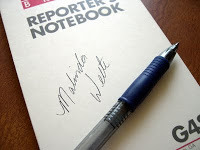 Reading is a great tool for writing and a great activity is to get young readers to act as newspaper reporters throughout the story. This could range from getting them to read out a TV style news item to writing a column for the local newspaper based on events from the book. Most books involve dramatic events that would easily be covered by local, and sometimes even national, news channels and encouraging them to report on events from the book might help them look at the book from a new perspective. For example was the wolf in Little Red Riding Hood really the villain? The media's penchant for twisting facts can make for an interesting perspective on new books.
Reading is a great tool for writing and a great activity is to get young readers to act as newspaper reporters throughout the story. This could range from getting them to read out a TV style news item to writing a column for the local newspaper based on events from the book. Most books involve dramatic events that would easily be covered by local, and sometimes even national, news channels and encouraging them to report on events from the book might help them look at the book from a new perspective. For example was the wolf in Little Red Riding Hood really the villain? The media's penchant for twisting facts can make for an interesting perspective on new books.Strategy Three: Hot-seating
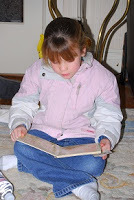 Have young readers step into the shoes of a character and get them to respond to a series of questions. As all of the answers about a character are not always given in the book the reader will have to think imaginatively about their responses and make up believable answers. This works particularly well for stories involving passionate crimes as it can be set up in a court of law situation with the reader having to justify the actions of the character. If this is a little bit advanced for a child the adult may instead step into the shoes of the character and allow the young reader to question them. Formulating questions for a character is a higher level thinking skill as the reader is probing the material and creating a personal line of enquiry.
Have young readers step into the shoes of a character and get them to respond to a series of questions. As all of the answers about a character are not always given in the book the reader will have to think imaginatively about their responses and make up believable answers. This works particularly well for stories involving passionate crimes as it can be set up in a court of law situation with the reader having to justify the actions of the character. If this is a little bit advanced for a child the adult may instead step into the shoes of the character and allow the young reader to question them. Formulating questions for a character is a higher level thinking skill as the reader is probing the material and creating a personal line of enquiry.Strategy Four: Thematic Collages
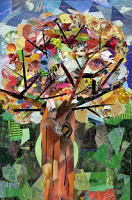 Young readers who respond well to art projects will enjoy creating collages around the major themes in a book. Looking at the finished collage anybody should be able to tell you what a particular book is about. For example, in the case of Romeo and Juliet there may be images concerned with death, love and violence. This would give anybody coming to the play for the first time an idea of what to expect if they read it, or indeed, watched it. This works well for young readers as it gives them a visual representation of all the major aspects of the text. With complicated texts this can help to break down more sophisticated concepts into simpler terms.
Young readers who respond well to art projects will enjoy creating collages around the major themes in a book. Looking at the finished collage anybody should be able to tell you what a particular book is about. For example, in the case of Romeo and Juliet there may be images concerned with death, love and violence. This would give anybody coming to the play for the first time an idea of what to expect if they read it, or indeed, watched it. This works well for young readers as it gives them a visual representation of all the major aspects of the text. With complicated texts this can help to break down more sophisticated concepts into simpler terms.Strategy Five: Create Your Own Ending
When you reach the last chapter of the book it's always a good idea to stop and digest everything that's happened. An even better thing to do is to make predictions about how the book could end and to write an alternative ending. The fun of this activity is that it can be easily made as serious or as fun as you want it to be. For fun you might try and get a young reader to write the most unlikely ending to the story. If you're wanting the reader to take the text more seriously however you might get them to make sensitive predictions about how the book will end and write their own version. Not only is this enhancing their ability to analyse books it is giving them the opportunity to improve their creative writing skills. At the end of it they will have produced a piece of work they are proud of and will probably enjoy reading the end of the book even more to look at the similarities and differences between their written ending and that of the author.
Susan's other interests lie in photography and amateur interior design. She has written this article on reading with kids on behalf of her favourite recliner sectionals specialists.
Published on August 18, 2011 06:20



